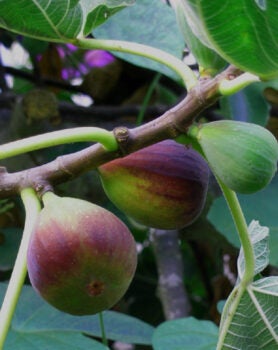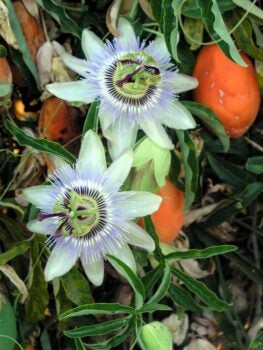Felder Column
Published 10:54 am Thursday, February 15, 2024
Got fruit? It’s easier than most folks realize to have a beautiful Garden of Eatin’ scattered with practical plants that also produce edible fruits. No matter how much we enjoy flowers, foliage, and fragrance, it’s even better to have something that when you tire of looking at it, you can eat!
I was incredibly fortunate to have been raised in a quirky horticultural wonderland, a big Delta landscape that had been meticulously carved into different garden “rooms” each with its own use. My great-grandmother Pearl was an avid garden clubber who kept meticulous notes on what bloomed when, and the birds that visited her garden; she even had a large metal Bird Sanctuary sign prominently displayed near the street.
As a youngster, into my early teens, I helped her tend a formal front lawn, an enclosed parterre of daffodils and iris and daylilies, a large vegetable garden, the primordial bayou bank studded with cypress knees, Louisiana iris and palmettos and horsetail. She lovingly tended a large perennial border of wildflowers and grew her own material for floral arrangements, and took time from chores to explain and instill in me a lifelong interest in and appreciation of urban wildlife, including some pretty bizarre insects.
But one of my favorite areas was the overstuffed little orchard with over a dozen different kinds or varieties of fruit trees: Pecans, a walnut, peaches, pears, a crabapple, plum, blackberries, pawpaw, jujube (a seriously overlooked summer fruit for Mississippi), figs, muscadines, blueberries, pomegranate, quince, elderberry, maypop vines, and both native and Japanese persimmon.
Too bad our climate isn’t suitable for others. South Mississippians can gamble on pineapple guava, bananas, and citrus, but unless you live in extreme northeast Mississippi, cherries, gooseberries, cranberries, and many bunch-type grapes won’t flower and set fruit (go online to learn about crucial “chilling hours”) or, like most raspberries, can’t cope with our hot humid summer nights. Unfortunately, some popular fruits require spraying for serious insects and diseases (peaches, plums, and pecans, I’m talking about you). Some require two or more different varieties for cross pollination, and muscadines and tree fruits do best with annual pruning.
For the best information on what fruits and their best varieties do well here, go to MSUCARES.com and type home fruit in the search box. Or email me for my free online brochure (rushingfelder@yahoo.com).
But there’s more. Pearl, a “citizen-scientist” who never got over her humble childhood roots, compulsive on growing food, once tried pickling the seedy fruits of her prickly pear cactus, and had me sample the mealy-tasting dull orange-red berries of her sprawling pyracantha, which turns out that, like vitamin-rich rose hips, is an apple relative. She even made her own then-illegal peach brandy; I still have the antique hillbilly type ceramic jug. And it was she who showed me that eleagnus, a large rambling vine we usually attempt to keep contained as a perpetually scraggly shrub, has delicious little fruits in late December and January.
There are other garden plants with edible fruits, roots, shoots, or leaves including sassafras (root beer, gumbo leaves), Chinese camellia for its tea leaves, asparagus-related smilax, redbud and daylily flowers, and many others suitable for urban foraging. Main thing is you can have your landscape and eat it, too.
Go back over that list of fruits I was raised with (several of which are still producing after well over half a century of neglect) and imagine having one or two or more of those in your landscape. You don’t have to eat the fruit of course, leaving it for wildlife to enjoy, but wouldn’t the choice be great?
Felder Rushing is a Mississippi author, columnist, and host of the Gestalt Gardener on MPB Think Radio. Email gardening questions to rushingfelder@yahoo.com.






